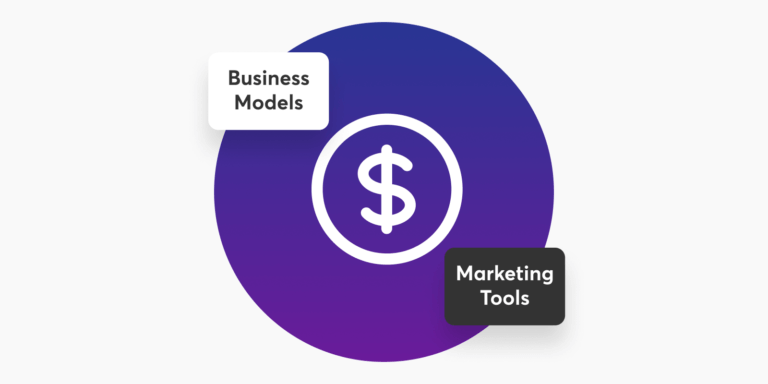Table of Contents
As a creator or knowledge business owner, your business is always on the move. The bad news is you’re not the first. The creator economy is hotter than ever, projected to hit more than half a trillion dollars by 2027 [1].
While the opportunities are plentiful, competition has gotten busier and market fluctuations have started impacting revenue predictions.
That complicates things for everyone.
Monetization gets confusing. You don’t know which course creator marketing tools to trust. And you end up saying no to clients just because you think you won’t have the time to take on a new project.
So, in this post I’d like to help clarify both the key “revenue streams” and “marketing tools” concepts that are essential to your success.
Whether you’re selling courses, membership, digital products or services, you should have a clear path to increasing revenue by the end of this guide to revenue streams for creators.
Part 1: Mastering the revenue models that drive growth
Understanding and mastering multiple revenue streams is what will help you transform your passion into sustainable (not just passive or “extra”) income, beyond just one revenue stream.
What are revenue streams and why do they matter?
Revenue streams are the different sources that generate income for a business by selling products or services. For digital creators and solopreneurs, these revenue streams are various ways to generate income from your content, expertise and relationship with an audience.
Knowing what the right revenue streams are and having a diversified set of revenue streams can provide financial stability, reduce reliance on a single source of income and allow you to grow your business in a healthy way.
Types of revenue streams can be transactional (like a course purchased once) or ongoing payments (like subscription fees). Core components of a successful revenue model include a strong alignment with your audience, an even greater value proposition for that audience, and adaptability to unique contexts.
Don’t assume a specific model will work for you just because it works for your competitors. You have to align your monetization method with what you’re selling and what your audience expects. When types of revenue streams don’t match they can damage your customer experience and revenue potential.
Top 4 revenue models for digital creators
Here are popular revenue streams options to consider, but I’d recommend going for a mix of these revenue models to cater to your exact audience’s needs.
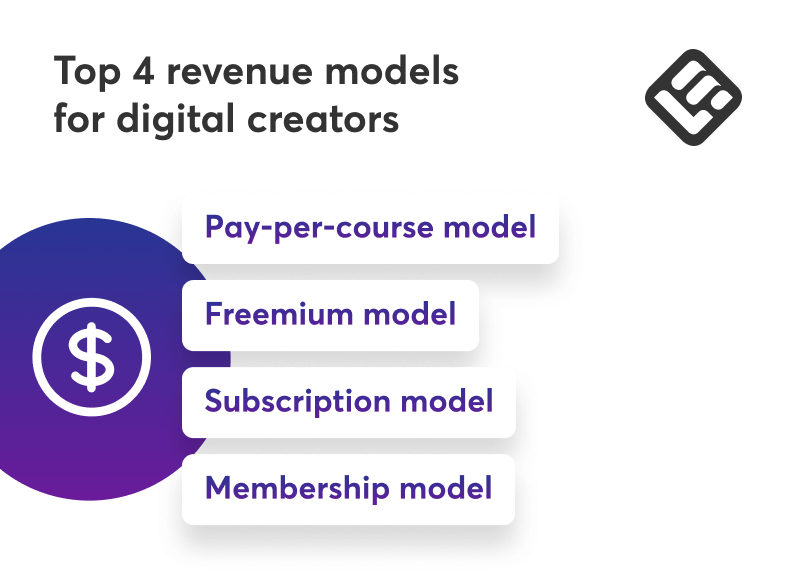
1. Pay-per-course model
The pay-per-course model is as simple as it sounds. Learners pay once to access a full course and that’s it. This traditional method has been the standard in online education and still holds massive potential for high-value courses.
It’s particularly effective for creators offering comprehensive, well-structured learning experiences that deliver specific outcomes, such as certifications or career advancement.
Recent reports show that learners are more eager to invest in their education when they can clearly see how that will help them develop new skills and advance their careers. As education technology, especially for skill-based learning continues to grow, it’s clear that students are actually happy to pay for courses that offer real benefits.
Some of the best use cases for the pay-per-course model are specialized courses aimed at career advancement, certifications, skill mastery or deep-dive training programs. Platforms like LearnWorlds give you the tools you need to create, host and sell flexible courses.
Pro tip
2. Freemium model
The freemium model is a model that gives value upfront and lets your audience try a piece of your offering for free, before it converts them into paying customers. You can think of freemium as the modern “try before you buy” strategy.
So if you offer free course sections, downloadable resources, templates or webinars, the goal is to build trust and lower the barrier to entry for new users.
The power of the freemium model is its ability to create a low-risk, accessible entry point for users, allowing them to explore and interact with your content before committing financially.
This model is ideal for offering free resources, mini-courses or templates that introduce your expertise. Why? It enables you to nurture relationships and guide your audience from free content to paid offerings more effectively.
Pro tip
3. Subscription model
Subscription models are another revenue stream if you want to turn your audience into loyal members. They’ll pay a monthly fee for premium resources or personalized experiences.
Bundles and subscriptions support this approach, so you can build sustainable revenue streams while focusing on creating impactful content without the pressure of having to make individual product sales.
With a recurring revenue model like this, you’ll know exactly how much you’ll earn and build deeper engagement with your subscribers.
Pro tip
4. Membership model
Need more recurring revenue streams? A membership model is an opportunity for you to build a community where you provide ongoing value, help people connect and create a sense of belonging while you generate revenue.
Membership models excel at retaining audiences because they offer more than transactional value. Members get exclusive perks, personal interactions and opportunities to connect with like-minded individuals.
Pro tip
Let’s compare all these revenue streams to see which ones are best if you want to generate recurring revenue and if efficient revenue generation is possible with just one revenue stream.
Part 2: Marketing tools that accelerate your business
How you put it all into action matters and you’re not alone in this.
Why marketing tools are essential for revenue optimization
Need more time?
Marketing tools can give you hours of extra time to focus on creation or strategic activities instead of operational and admin tasks. With generative AI, even content creation becomes faster so your business can reach your target audience faster.
Implementing marketing tools can maximize the impact of your content, help you nurture leads, convert prospects into paying customers and retain existing clients.
This goes beyond just selling.
So what do you start with to get similar results from your different revenue streams?
4 high-impact tools for creators looking to generate multiple revenue streams
I’ve picked four must-have marketing tools for content creators. These are the tools I can’t live without and I recommend you don’t skip either.
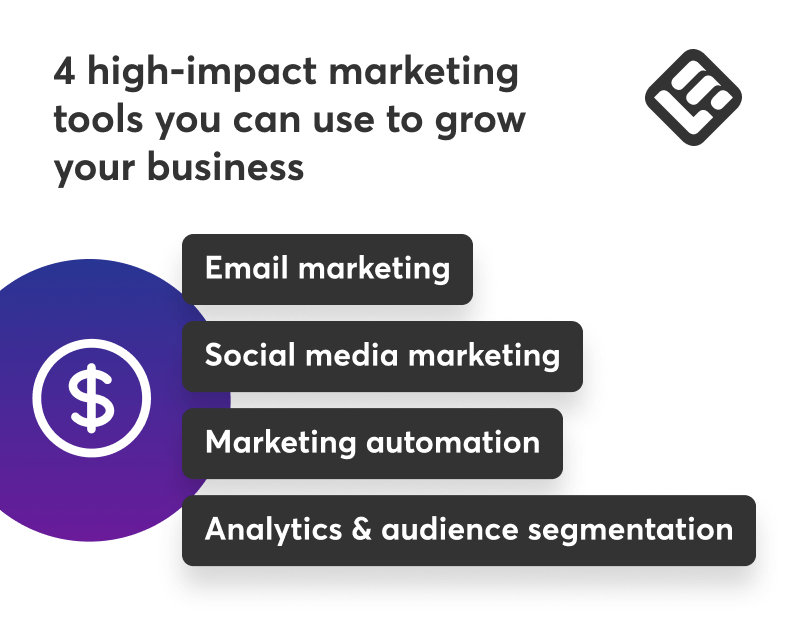
1. Email marketing
Email is not dead. Email conversion rates typically range from 2% to 5% (those are good numbers), depending on the industry and email type.
With LearnWorlds’ email marketing integrations, you can manage and automate email campaigns by connecting platforms like Mailchimp or ActiveCampaign.
This allows you to segment your audience based on behavior (eg course completion, lesson views) and send highly personalized content, such as reminders, discounts or new course offerings tailored to each student’s learning journey.
Pro tip
2. Social media marketing
With over 5.41 billion social media users worldwide, you’ll want to expand your reach.
Social media marketing allows for two-way communication where you can interact with your audience, gather feedback and create a sense of community. But you need to know which channels to focus on by understanding where your audience spends most of their time and what type of content they like.
Hosting your content on a learning management system helps you share your course announcements, updates and previews across multiple social media platforms for course promotion.
This will also help you build a community around your courses, drive organic growth to your online school through user-generated content, testimonials, and social sharing.
For example, part of your marketing campaigns can focus on engaging your audience by promoting live events such as webinars or Q&A sessions hosted directly on LearnWorlds. You can then share these across social platforms to attract more students and strengthen community connections.
Pro tip
3. Marketing automation
You might want to think about marketing automation if you want to speed up your efforts without losing the personal touch with your customers and audience. I am talking about scaling without losing personalization.
Automation tools can help you manage lead generation, follow-ups and customer retention efficiently, saving you valuable time and maximizing impact at the same time.
When you connect LearnWorlds to tools like Zapier, for example, you can automate everything from sending onboarding emails to tracking student progress and triggering specific actions. In practice, when a student reaches a certain milestone, you can choose to send a congratulatory message automatically or suggest the next step in their learning journey.
I’ve found that integrating our content strategy with our sales pipeline promotes revenue growth. Tracking LTV per client, sales velocity, etc., helps us find relevant revenue opportunities and try to use our content as a sales accelerant for them. We use Zoho Mail integrated with Zoho CRM to send automated emails and webinar invites on relevant issues, like “AI-Ready Talent: Hiring for Technical Depth in a Post-LLM World”. We converted 4 out of 12 leads into clients and can expect a 23% lift in projected annual revenue.
Pro tip
Try these marketing automation ideas to boost multiple revenue streams and transactional revenue from day one.
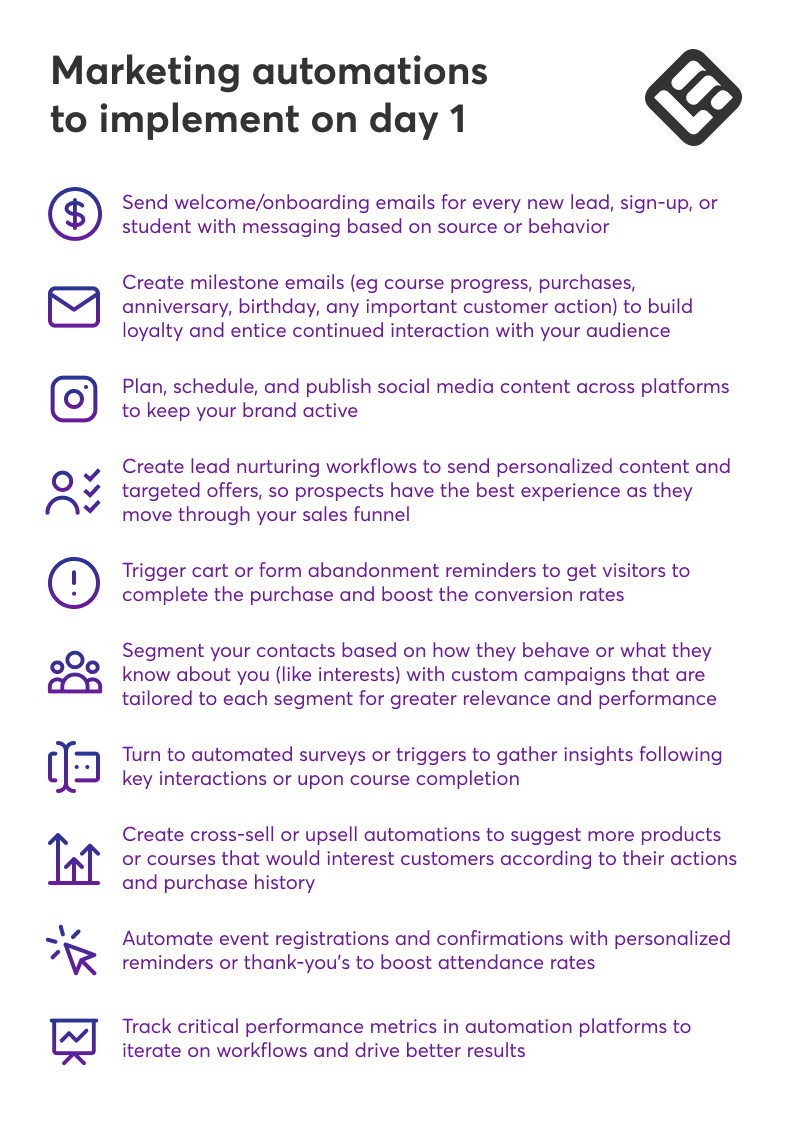
4. Analytics and audience segmentation
Data-driven decision-making is at the heart of successful marketing strategies. Tools that offer analytics and audience segmentation allow you to gain deep insights into your audience’s behavior and preferences so you can deliver the right content to the right people at the right time.
Segmented email campaigns perform better than non-segmented ones. Research shows that segmented email campaigns get 30% more opens than non-segmented ones.
If you use a learning management system like LearnWorlds, you already have access to robust analytics and reporting tools that give you detailed insights into how students engage with your courses.
Pro tip
Part 3: Integrating diversified revenue streams and marketing tools for maximum impact
Making the most of your content is about integration, not working with siloed tools and separate strategies.
Why integration is key to recurring revenue
When your company’s revenue streams and marketing tools work together, they create a workflow. This means you don’t have to manually handle repetitive tasks and you’ll be able to speed up content distribution while delivering timely relevant content.
When your budgets, sales and marketing are treated as separate functions, you also benefit from integrated systems. These allow you to track and understand the entire customer journey.
3 strategies for next-level growth from more revenue streams
Let me show you how you can achieve this strategic alignment to generate revenue and grow.
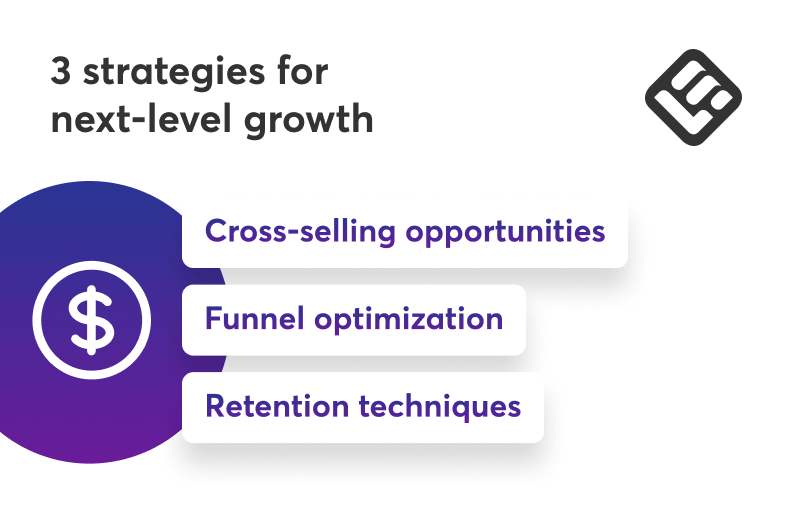
1. Cross-selling opportunities
By offering related products or services alongside a primary offering, you can increase customer satisfaction and revenue.
Say a user buys an online course about business strategy from you. You can offer an advanced, specialized course as an add-on to your revenue streams.
Companies that implement cross-selling have seen a 10-30% increase in revenue. This allows businesses to boost their average transaction value by offering complementary or related products or services to existing customers.
Pro tip
2. Funnel optimization
Whatever you’re selling, funnel optimization moves customers from awareness to conversion.
But that means you need to take the extra time to understand and track the customer journey and optimize every touchpoint to minimize friction.
Pro tip
3. Retention techniques
Retention equals maximal lifetime value for each customer. There are many ways to do retention and they always depend on what makes your customers tick.
Got an audience that likes to celebrate achievements? Try automating emails for milestone events. Seeing people consistently restart or return to specific topics in a course? You can follow up with them directly after personalized courses or webinars.
Pro tip
Your creator journey to higher revenue generation starts here
Whether it’s a subscription, membership, freemium or pay-per-course model, how you monetize your content for more revenue is as important as how you market it.
Pair these models with the right marketing tools (like email personalization, social media engagement, automation) and you’ll reach new levels of efficiency, retention and profitability.
I’ve only touched the surface of what’s possible when you align your business model with a marketing strategy. The real magic happens when you start integrating these systems and creating a smooth, automated engine that drives growth.
Try LearnWorlds for free and see how easily you can integrate powerful tools to grow on multiple revenue streams.
Sources
[1] The creator economy could approach half a trillion dollars by 2027Rosemary is LearnWorlds’ Content Marketing Manager. She has over 2 decades of experience in omnichannel marketing and content writing for the IT and SaaS industry. Her expertise lies in crafting effective content marketing strategies that attract, engage, and nurture customers, enabling LearnWorlds to reach its target audiences with precision.

Alexandra Cote
Alexandra Cote is a SaaS growth marketer and online instructor who's worked with dozens of brands in the MarTech, HR tech, and productivity space. She's also a strong supporter of staying happy at work and choosing a healthy career path.

